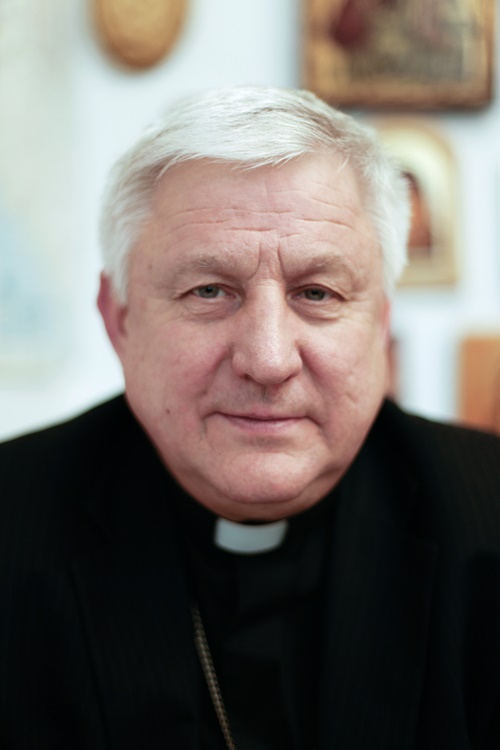|
For Roman Catholics in Ukraine, winds of war and ghosts of a violent past "The war may seem far away. But in reality, many young men from the western part of the country have joined the war. Just recently, a row of fir trees was felled in the cemetery of Lutsk to bury 13 young soldiers." FRANKFURT—Roman Catholic Bishop Stanislav Shyrokoradiuk of Kharkiv-Zaporizha does not mince his words: “The situation in the war zones is catastrophic. There is hunger. More than 80 people have already starved in Lugansk and Donetsk.” The bishop, who also serves as director of Caritas Ukraine, made his comments in a presentation to staff of the international Catholic charity Aid to the Church in Need. The Diocese of Kharkiv-Zaporizha encompasses almost the entire eastern part of Ukraine, including areas that are no longer under the control of the government in Kiev
According to Bishop Shyrokoradiuk, more than 18 million people live in his diocese, including some 60,000 Roman Catholics. “We are a missionary church. Twenty years ago, we didn’t have a single parish, today there are more than 50. The faithful here have Ukrainian, Polish, Russian as well as Vietnamese roots.” The local Church is committed to pastoral as well as social and humanitarian tasks. “We receive shipments of relief supplies and medicine from Western Europe. We need this help, Christian solidarity, but also political aid,” said Bishop Shyrokoradiuk. He is worried about the rising tide of refugees from the war zones; he estimates that there are more than 20,000 in Kharkiv at this time. “We are trying to help where we can. Just a few weeks ago, we were at least able to give 300 pairs of shoes to children.” But the prelate’s influence is limited. To his knowledge, the aid intended for people in the self-proclaimed People’s Republics of Donetsk and Lugansk rarely reaches those in need. Bishop Vitaliy Skomarovsky of the Roman Catholic Diocese of Lutsk in western Ukraine also has to cope with the fall-out from fighting in the east of the ountry. “The war may seem far away. But in reality, many young men from the western part of the country have joined the war. Just recently, a row of fir trees was felled in the cemetery of Lutsk to bury 13 young soldiers.” Other cities have also buried soldiers killed in the line of duty According to Bishop Skomarovsky, the Church is taking care of the bereaved as well as those families whose fathers have gone east as soldiers. “The war is ever-present. We notice that financial resources are being used for it; many things in the social sector have been stopped. However, people are now doing a lot more on their own initiative, solidarity is growing among the people,” the bishop said. For example, local people have been collecting warm clothing, among other things, because many soldiers in the east are inadequately equipped and feel as though they have been abandoned. With 35 parishes and 25,000 faithful, the Diocese of Lutsk is the smallest in Ukraine. Until World War II, it was part of the Polish territory of Volhynia. Ukrainian nationalists carried out a number of massacres of the predominantly Polish population in the region, beginning in mid-July 1943. These were tolerated by the German occupying force. More than 50,000 people were killed. As a result of the massacres, many Catholic parishes are still deserted today. Bishop Skomarovsky reported that “a very, very large number of people” participated in the Memorial Mass held at the cemetery of Skirche on July 11, 2014. But the prelate does not “feel any tension among the new, younger generations.” In Ukraine, which is populated by so many different demographic groups, this is a modest sign of hope for national reconciliation. Said Bishop Shyrokoradiuk, “we hope for peace because many people are praying for it.” ACN photo: Bishop
Stanislav Shyrokoradiuk |
|
|

